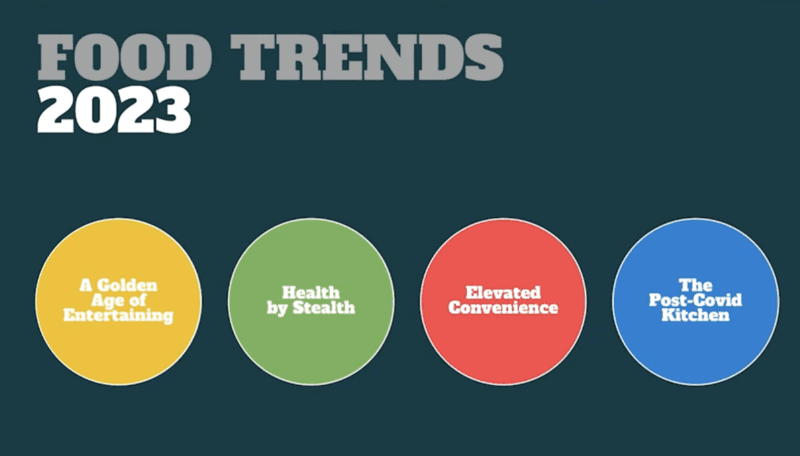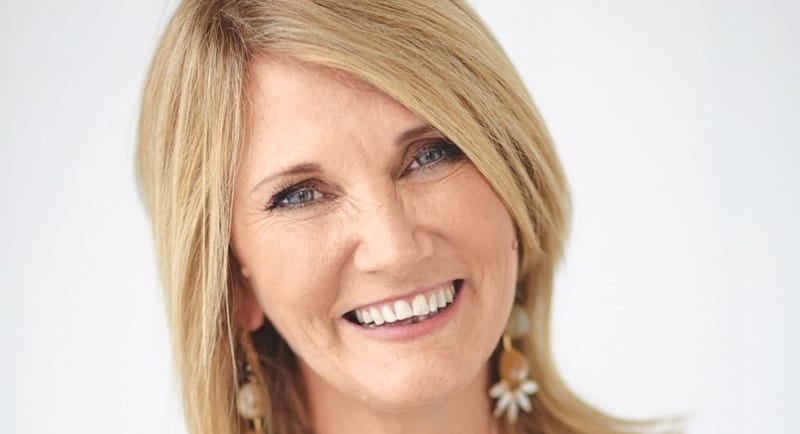News Corp has released its latest findings from the News Food Corp Network’s Trend Forecast – 2023 Special Edition, giving a deep insight into what the company’s audience of millions is up to in the kitchen.
On the menu as the holidays approach are trends like entertaining friends at home, meals that are conscious of health, and the rising intention to buy large and small appliances. Overarching across all the trends, people are looking to achieve fast and effortless food – without compromising on flavour.
The shadow of Covid still looms over people’s eating habits, however, and the report has revealed that 75% of consumers are experiencing greater cost of living pressures compared to last year.
See Also: News Corp Australia reveals the food trends to expect in 2023
Mediaweek spoke to Brodee Myers-Cooke, News Corp editorial director of mass food, about what the future of food holds, and what the data means for brands.
With the sheer amount of data that the News Food Corp Network’s Trend Forecast produces, Myers-Cooke says that the team have quite a challenge when it comes to sifting through it all.
“These trend forecasts are many months in development, and there’s a lot of debate all the way through about whether we are picking the things that are going to drive the most action. We use these ourselves to drive action, but it’s also thinking about what’s going to drive action out there in the wider food landscape as well – that’s our true north, you might say.
“What we want to see is movement at the checkout, we want to see people engaging with it, clicking on it, every part of that action. But to use a food term, it’s like a massive spaghetti bowl – there are so many trends out there. So we’re just giving people clarity.”

When it comes to finding what, exactly, will drive the most action for the brand, Myers-Cooke says that there’s a tried and true formula the team uses.
“We look at that point where scale meets uplift. Because there are 80 million data points coming in every day, it’s where it’s easy for us to zero in on where the big uplift was, and then go down the list and see what’s at scale.”
As with almost every aspect of life, the impacts of Covid can still be felt in kitchens across Australia. When asked to look into the crystal ball and predict how long these impacts would be felt, Myers-Cooke says that “We strongly believe that food will never go back to where it was pre-Covid.”
The impacts haven’t necessarily all been negative. The things people learned while forced to spend time at home – usually learning how to make sourdough and baked feta to pass the time – have stuck around.
“People have honed their skills, and we’ve got many, many more people who would classify themselves as home cooks who didn’t before.”
For brands, the post-Covid kitchen clean-out presents a unique opportunity.
“One of the huge headlines for me was the brand loyalty shake up,” says Myers-Cooke. “People just thought, ‘I’m throwing everything out, and I’m starting again. What brands are good to buy?’. 60% of people say that they’re going to stick with the changes that they make, so I think that alone says something.”
Other remnants of lockdowns are ones that Myers-Cooke says will be sticking around for the foreseeable future.
“People are not going to go back to feeling like they’ve got more time in their kitchen. There is a real sense that time has shrunken – not just around food. That’s not going to change.
“Home cooking is going to be ongoing, and I think the cost of living and Covid have collided on that one.”

Speaking of the cost of living, the report revealed that three quarters of consumers are experiencing greater cost of living pressures compared to last year, and 70% of people expect that the pressure will continue to become greater in the next year.
Groceries are the number one noticeable price increase impacting households currently.
“The fact that groceries were the number one impact that people were seeing for cost of living surprised me,” says Myers-Cooke. “Seeing that groceries really are higher for people than fuel, bills, rent and mortgage, eating out, entertaining – I thought that was a really big headline that goes across everything for us.
“We work very closely at taste.com.au with Coles, and delicious. works really closely with Woolworths. We feel that we can really have a big impact on Australians through that alone, especially for dinner, because it’s the most expensive meal of the day.”
Taste Test Kitchen
In November, News Corp will be launching a new platform called Taste Test Kitchen to help guide Australians to the best appliances and supermarket products for their needs. Myers-Cooke describes the platform as “a rating and review site for anybody who wants to know more about anything to do with what you’re buying for the kitchen.”
“We’ve got SEO people crawling all over our work, and they’ve said for a long time: ‘do you realise how incredible your authority is in appliances?’. Two of our top five new recipes in the last 12 months were air fryer recipes, and this has just built incredible domain authority.
“We’ve also got our food editors who know all of these appliances – they use them every day, they’ve got really strong opinions, and over 200,000 hours of experience. We thought let’s unleash this, because people want more direction. They want to know, ‘what do I buy?’. These first dabblings have been a massive success.”

For brands partnering with News Corp – through Taste Test Kitchen or otherwise – the proof is in the pudding.
“We’ve gotten so good, I’ve got to say, at being able to integrate brands into our content,” says Myers-Cooke. “We always do it because they’re brands or products we believe in, but our consumers see it for what it is, which is genuine service and value.
“We often will show a product in a video and it’s completely unsponsored – sometimes we put six or seven products blatantly in them. They can be our biggest content, because people go ‘thank you, that’s what Taste uses.’
“It helps us unleash all the expertise that our food team have from trying everything in that space. Showing people what we use, I think, is becoming an increasingly important part of content creation.”
